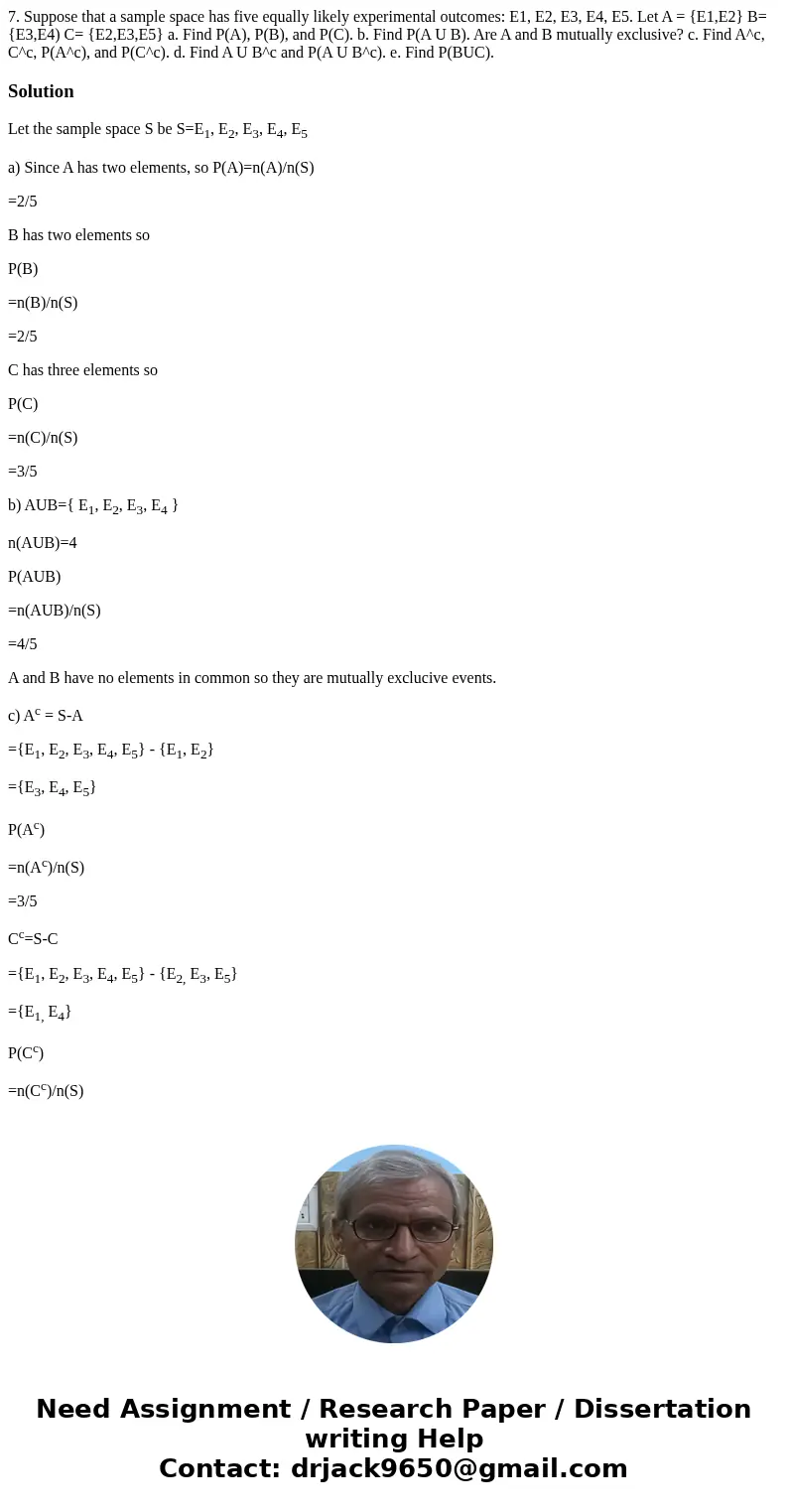7 Suppose that a sample space has five equally likely experi
7. Suppose that a sample space has five equally likely experimental outcomes: E1, E2, E3, E4, E5. Let A = {E1,E2} B= {E3,E4) C= {E2,E3,E5} a. Find P(A), P(B), and P(C). b. Find P(A U B). Are A and B mutually exclusive? c. Find A^c, C^c, P(A^c), and P(C^c). d. Find A U B^c and P(A U B^c). e. Find P(BUC). 
Solution
Let the sample space S be S=E1, E2, E3, E4, E5
a) Since A has two elements, so P(A)=n(A)/n(S)
=2/5
B has two elements so
P(B)
=n(B)/n(S)
=2/5
C has three elements so
P(C)
=n(C)/n(S)
=3/5
b) AUB={ E1, E2, E3, E4 }
n(AUB)=4
P(AUB)
=n(AUB)/n(S)
=4/5
A and B have no elements in common so they are mutually exclucive events.
c) Ac = S-A
={E1, E2, E3, E4, E5} - {E1, E2}
={E3, E4, E5}
P(Ac)
=n(Ac)/n(S)
=3/5
Cc=S-C
={E1, E2, E3, E4, E5} - {E2, E3, E5}
={E1, E4}
P(Cc)
=n(Cc)/n(S)
=2/5
d) Bc
=S-B
={E1, E2, E3, E4, E5} - {E3, E4}
={E1, E2, E5}
AUBc
={E1, E2} U {E1, E2, E5}
={E1, E2, E5}
P(AUBc)
=n(AUBc)/n(S)
=3/5
e) BUC={E2, E3, E4, E5}
P(BUC)
=n(BUC)/n(S)
=4/5

 Homework Sourse
Homework Sourse